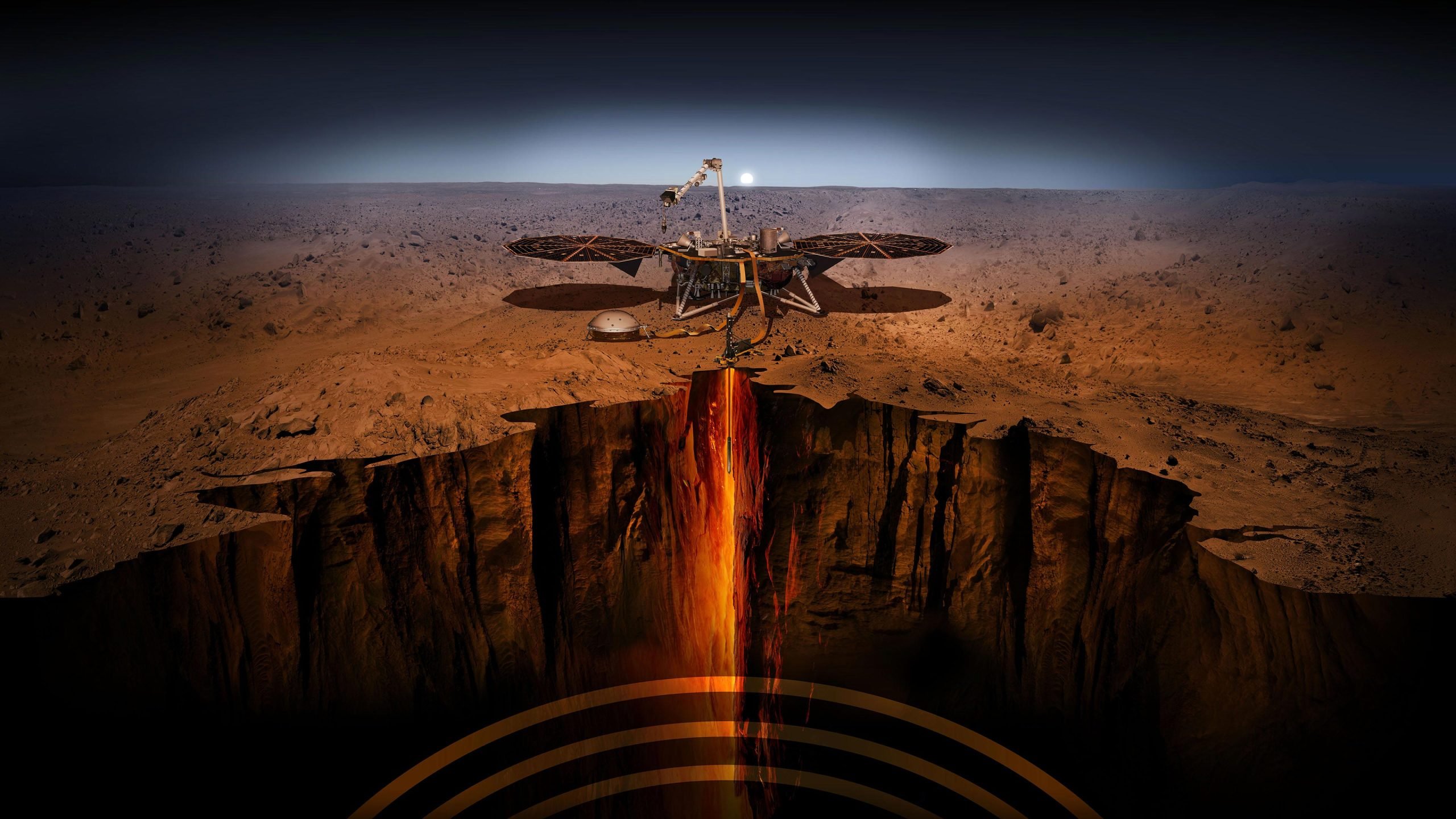تفسير الفنان لمركبة إنسايت على كوكب المريخ. تم تصميم Insight ، وهو اختصار للاستغلال الداخلي باستخدام الدراسات السيزمية والجغرافيا ونقل الحرارة ، لتوفير أول اختبار كامل له منذ تشكل الكوكب الأحمر قبل 4.5 مليار سنة. الائتمان: NASA / JPL-Caltech
كان الزلزال ، الذي قُدرت قوته 5 درجات بمقياس ريختر ، أقوى زلزال تم العثور عليه على كوكب آخر.
اكتشف مسبار إنسايت المريخ التابع لوكالة ناسا أكبر زلزال تم تسجيله على الإطلاق على كوكب آخر: في 4 مايو 2022 ، يوم 1،222 المريخ ، أو سول ، حدث زلزال بقوة 5 درجات. يضيف قائمة بأكثر من 1313 زلزالًا اكتشفها InSight منذ الهبوط.[{” attribute=””>Mars in November 2018. The biggest quake previously recordedwas an estimated magnitude 4.2 detected on August 25, 2021.

This spectrogram shows the largest quake ever detected on another planet. Estimated at magnitude 5, this quake was discovered by NASA’s InSight lander on May 4, 2022, the 1,222nd Martian day, or sol, of the mission. Credit: NASA/JPL-Caltech/ETH Zurich
InSight was sent to Mars with a highly sensitive seismometer, provided by France’s Centre National d’Études Spatiales (CNES), to study the Red Planet’s deep interior. As seismic waves pass through or reflect off material in Mars’ crust, mantle, and core, they change in ways that seismologists can study to determine the depth and composition of these layers. What scientists learn about the structure of Mars can help them better understand the formation of all rocky worlds, including Earth and its Moon.
Although a magnitude 5 quake is a medium-size quake compared to those felt on Earth, it’s close to the upper limit of what scientists hoped to see on Mars during InSight’s mission. The science team will need to study this new quake further before being able to provide details such as its location, the nature of its source, and what it might tell us about the interior structure of Mars.
“Since we set our seismometer down in December 2018, we’ve been waiting for ‘the big one,’” said Bruce Banerdt, InSight’s principal investigator at NASA’s Jet Propulsion Laboratory in Southern California, which leads the mission. “This quake is sure to provide a view into the planet like no other. Scientists will be analyzing this data to learn new things about Mars for years to come.”
The large quake comes as InSight is facing new challenges with its solar panels, which power the mission. As InSight’s location on Mars enters winter, there’s more dust in the air, reducing available sunlight. On May 7, 2022, the lander’s available energy fell just below the limit that triggers safe mode, where the spacecraft suspends all but the most essential functions. This reaction is designed to protect the lander and may occur again as available power slowly decreases.

This seismogram shows the largest quake ever detected on another planet. Estimated at magnitude 5, this quake was discovered by NASA’s InSight lander on May 4, 2022, the 1,222 Martian day, or sol, of the mission. Credit: NASA/JPL-Caltech
After the lander completed its prime mission at the end of 2020, meeting its original science goals, NASA extended the mission through December 2022.
More About the Mission
Jet Propulsion Laboratory (JPL) manages InSight for NASA’s Science Mission Directorate. InSight is part of NASA’s Discovery Program, managed by the agency’s Marshall Space Flight Center in Huntsville, Alabama. Lockheed Martin Space in Denver built the InSight spacecraft, including its cruise stage and lander, and supports spacecraft operations for the mission.
A number of European partners, including CNES and the German Aerospace Center (DLR), are supporting the InSight mission. CNES provided the Seismic Experiment for Interior Structure (SEIS) instrument to NASA, with the principal investigator at IPGP (Institut de Physique du Globe de Paris). Major contributions for SEIS came from IPGP; the Max Planck Institute for Solar System Research (MPS) in Germany; the Swiss Federal Institute of Technology (ETH Zurich) in Switzerland; Imperial College London and Oxford University in the United Kingdom; and JPL. DLR provided the Heat Flow and Physical Properties Package (HP3) instrument, with significant contributions from the Space Research Center (CBK) of the Polish Academy of Sciences and Astronika in Poland. Spain’s Centro de Astrobiología (CAB) supplied the wind and temperature sensors.











